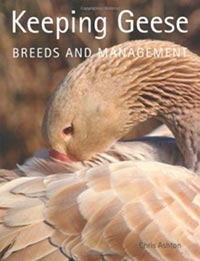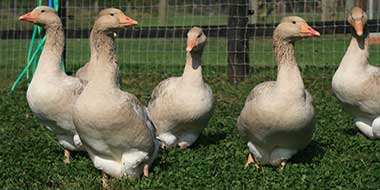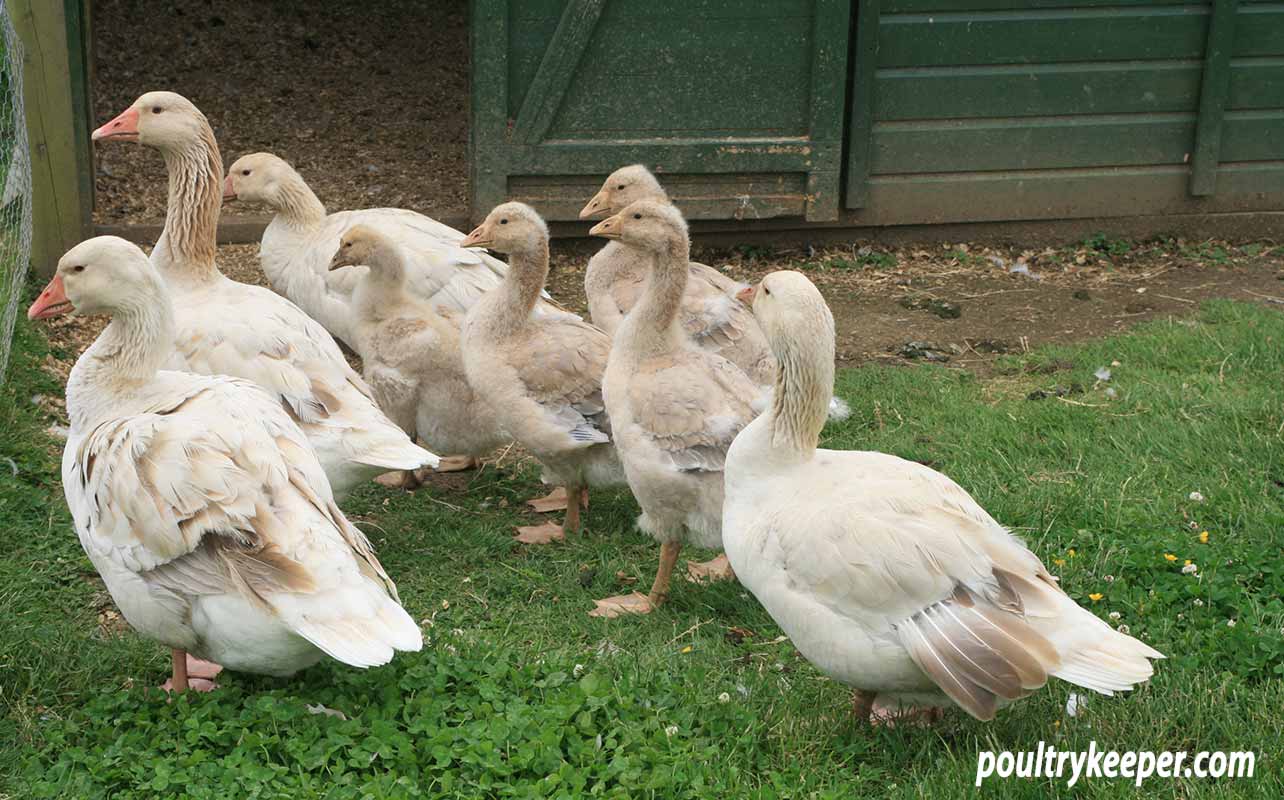
Providing you can give sufficient space, adequate ventilation and security from nighttime predators, a goose house need not be complicated. Although you can purchase dedicated goose houses, many poultry keepers use a converted garden shed or an old outbuilding. In this article, Mo provides the low-down on housing geese.
Why should I house my geese?
Whether or not you plan to eat your geese, they are potentially on the menu for many. Most notably foxes, but there may be mink, polecats or badgers ready to take your birds depending on where you live. All are good at digging and chewing.
You need to plan suitable housing before your birds arrive so that they can be safely shut in at night, or their whole enclosure will have to be vermin-proof. Rats can be a problem, too, especially when there are goslings.
Be neighbourly!
Early summer mornings might mean noise, especially if you have African or Chinese Geese, which are particularly vocal. Housing geese until a reasonable hour in the morning may prevent disputes with people who live nearby. As with most causes of annoyance, there will be a middle ground if you explain your point of view and listen to theirs.
Grand designs for housing geese
Night-time housing does not need to be complicated, and if access is suitable, you may have an outbuilding that can be re-purposed. Windows can be removed and replaced with weldmesh to allow ventilation. You won’t need perches; geese rarely want to get far off the ground.
You may need to re-think fence lines a little for the homeward ‘drive’. A fence connecting to one side of the house or even making a corner will help. Unlike chickens, you will need to prompt them a little to turn in. Bedtime gets less dramatic once they get the idea, especially if the ‘training’ phase is unhurried and calm. Walk slowly with arms outstretched and talk to them as you go. If you have a routine, geese quickly learn what is expected.
Many of our domestic breeds of geese are heavy. Really heavy. A pair of exhibition Toulouse Geese will weigh as much as a big bag of feed between them. Along with the breeds getting bigger under domestication, they have lost a little bit of the agility of their Greylag and Swan Goose ancestors. When planning the housing, you need to bear this in mind, don’t expect them to climb a steep incline or jump over a high threshold as a dog does.
Garden sheds, poultry houses and livestock buildings are readily available in kit form. Housing made from recycled plastic is increasingly coming on the market. The sturdiness is usually in line with the cost. If you plan to move the building from time to time, ease of dismantling might be worth considering.
A lightweight shed may work for housing geese for a little while, but predators will force their way in if you let it rot. DIY projects are satisfying and frequently end up over-engineered!
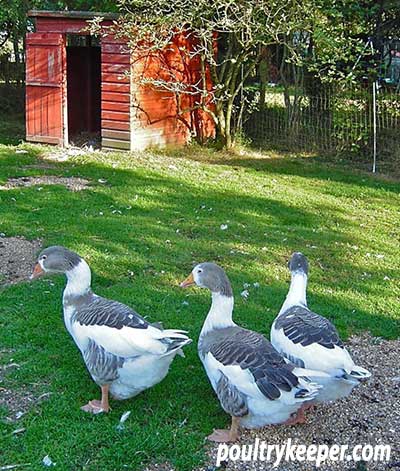
Floor plan
Will your house have a floor or sit straight on the ground? The base can be solid timber or cement but must be well-covered with bedding. This can be chopped straw or untreated wood shavings. Straw rots down the most readily into compost, but shavings can be cleaner with less ammonia smell in the house. You may find other substrates locally, but check that they are untreated and dust-free.
A deep litter system, where bedding is topped up daily, can work well over bare ground as moisture can go straight through. The litter at the bottom gradually rots into the soil. The floor will need a wire base extending beyond the walls to stop vermin digging in.
The wire should be galvanised and heavy-duty; rust and rot can lead to bits of wire coming loose. Not only will predators get in, but geese may nibble wire (or anything loose). Sharp things like this can lead to internal injury if swallowed or cause cuts to the feet and legs. Goose droppings are generously given; the litter is there to mop up poop and keep the birds comfortable.
Key design features for Housing Geese
Here are some important features for your goose house:
- Sturdy
- Well-ventilated
- Wide doorway to prevent trampling
- Regular clean bedding
- Tall enough for you to get in
- Floor protected from digging in
Foot friendly
Because geese are so heavy, their feet can be damaged by rough surfaces. It would help if you covered exposed wire or rough concrete. If the bedding wears thin and they are uncomfortable, geese tend to tuck their feet up and sit on their breasts. Their feathers will get dirty and lose their waterproofing over time. Geese only moult once a year and rely on good feather condition to stay warm.
Looking after feet extends to the entrance to the house and their regular walkways. Stones should ideally be smooth shingle or tumbled stones rather than sharp crushed rock. Even minor injuries to the feet can get infected, or calluses can form, causing pain and distress.
How much space do geese need?
Although a large kennel may look the part for housing geese, it is too small. A taller building where you can stand up and go inside is much more practical. About a square metre per bird is a good rule of thumb for small houses and gives a little extra space if they are to nest. Larger flocks will manage on slightly less per bird.
Facing wire windows away from the prevailing wind will help prevent rain from driving in. Be prepared to add partial shutters on the outside in exposed areas. Take a look around your locality; which side of nearby buildings get wet first when it rains? Condensation and dampness in your goose house are not good. Mould will thrive, and your birds can pick up respiratory diseases.
When spring is in the air…
If you plan to let geese sit on eggs, they are going to be there for nearly a month once they start. Having them sitting in the goose house makes sense, but once goosie chooses a nest site, she will want to stay there, even if it is unsuitable.
Outside, the goose will look for somewhere to make a little scrape in the soil, perhaps under a hedge or overhanging branches. She likes a little privacy! Nesting material will be pulled in from around the nest. Forming a little niche with straw bales or branches in the goose house can encourage her to lay inside, especially if more attractive areas outside are fenced off at laying times.
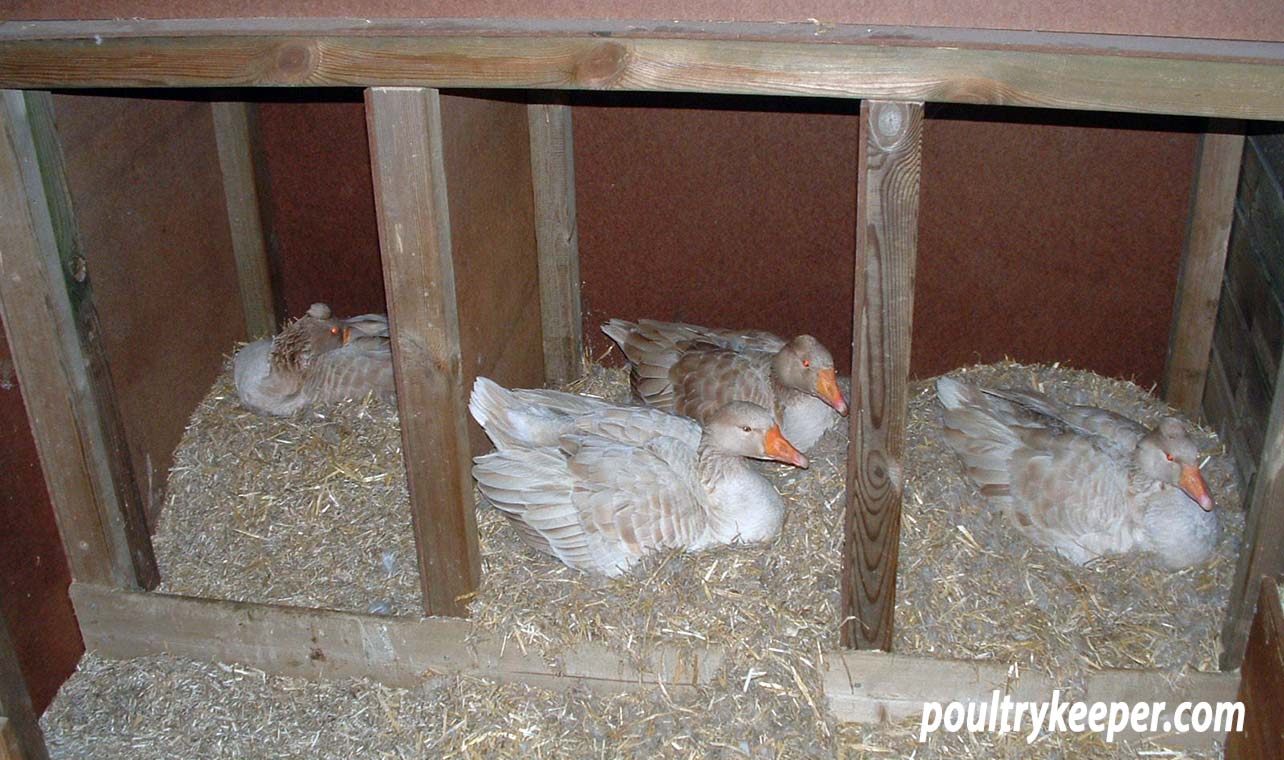
Photo courtesy of Andrea Heesters.
Geese housed together at night, especially if they are sisters, may want to share a nest. This should be discouraged as there will end up being squabbles, and eggs will get broken. As your flock grows, you may start to split up your breeding groups, and you will need more sheds. Any smallholder will tell you; you can never have enough sheds!
Other useful articles & guides:
- The Beginner's Guide to Keeping Geese - All of the information you need to start keeping geese in this useful guide.
- How to Get Rid of Rats - Be on your guard for rats. This article offers some practical advice on removing these pests.
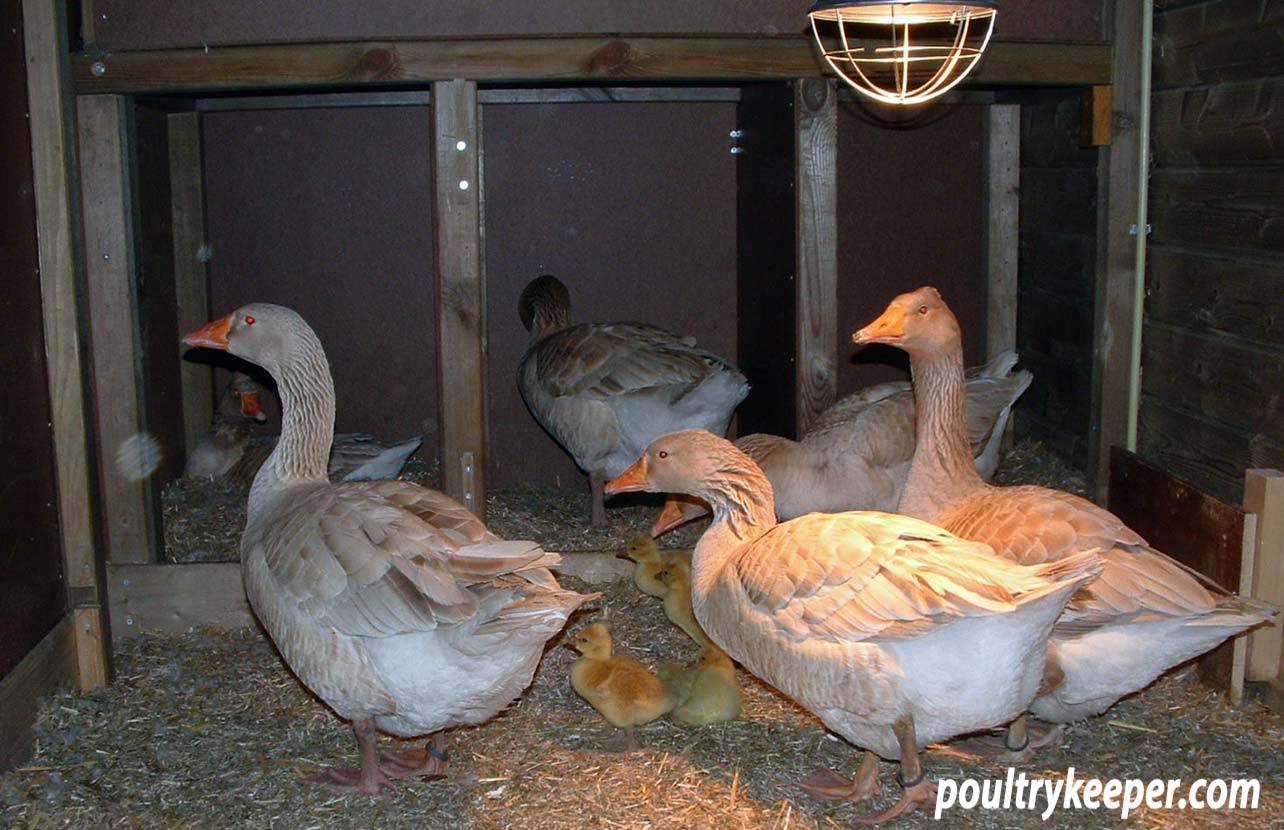
Photo courtesy of Andrea Heesters.
KEEPING GEESE
BREEDS AND MANAGEMENT
This authoritative book on keeping domestic geese covers all aspects of management and breeding, as well as detailed information on the breeds.
A practical book, full of clear, detailed guidance and information with many colour photos.
It is suitable for beginners or people simply considering keeping geese, as well as the more experienced keeper.
